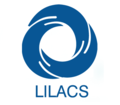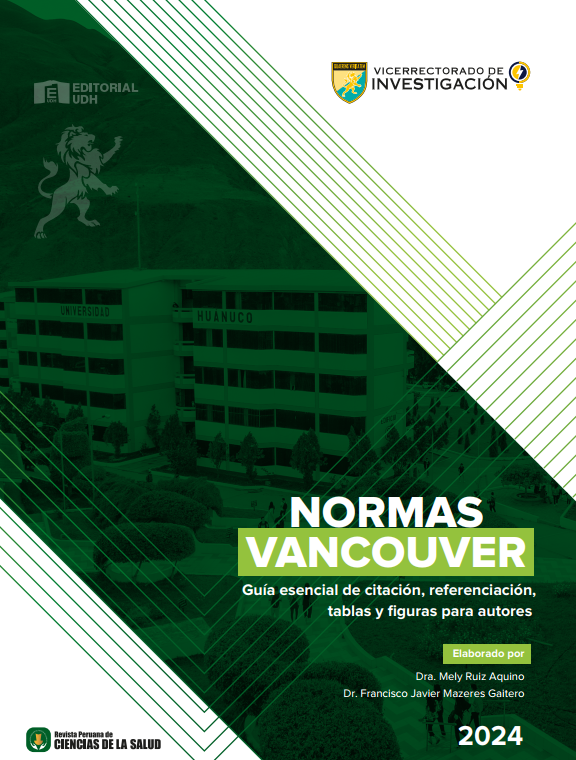Programa de Rehabilitación y Desempeño Funcional de pacientes con enfermedad de Parkinson Centro Médico Naval “Cirujano Mayor Santiago Távara”
DOI:
https://doi.org/10.37711/rpcs.2021.3.2.306Palabras clave:
programa, rehabilitación, rendimiento fisico funcional, enfermedad de ParkinsonResumen
Objetivo. Determinar la asociación existente entre la aplicación del Programa de Rehabilitación (PR) y el Desempeño Funcional (DF) de pacientes con enfermedad de Parkinson en el Centro Médico Naval “Cirujano Mayor Santiago Távara”. Métodos. Estudio analítico, longitudinal, de cohortes retrospectivo, en 18 meses. Mediante una muestra de 46 pacientes, en dos cohortes, se determinó el desempeño funcional por dimensiones de actividades básicas (índices de Barthel), fuerza y resistencia (SPPB) y velocidad de marcha. Se usaron cinco valores o categorías para determinar la dependencia, fragilidad y descoordinación. Se determinó la normalidad mediante la prueba Kolmogorov-Smirnov y para el análisis estadístico se empleó la U de Mann- Whitney, donde se consideró significativo un valor de p <0,05. Resultados. El promedio de edad de pacientes fue 79 +/- 3 años (rango: 76-82) de la cohorteexpuesta y 72 +/- 3 años (69-75) de la cohorte no expuesta al PR, 33 (71,7 %) fueron varones del total de la muestra. El 54,3 % (25) tuvieron una o más caídas y en el 45,65 % (21) su cuidador era un familiar. Existe asociación directa entre el PR y el DF (p = 0,009) y en sus dimensiones: actividades básicas (p = 0,001), fuerza y resistencia (p=0,001) y velocidad de marcha (p = 0,001). La cohorte o grupo expuesto al PR mejoró en autonomía, independencia, resistencia y equilibrio en relación al grupo no participante del PR. Conclusiones. Existe asociación directa entre el PR y el DF en todas sus dimensiones: actividades básicas, fuerza, resistencia y velocidad de marcha. A mayor duración del PR se observó mejor DF.
Descargas
Referencias
1. Micheli F. Enfermedad de Parkinson y Trastornos relacionados. 2da ed. Buenos Aires: Edit. Médica Panamericana; 2011.
2. Borrione P, Tranchita E, Sansone P, Parisi A. Effects of physical activity in Parkinsons disease: A new tool for rehabilitation. World J Methodol. [Internet] 2014; 4(3): 133-143 [Consultado 2019 Nov 8] Disponible en: doi: 10.5662/wjm.v4.i3.133.
3. Hurtado F, Cárdenas MA, Cárdenas F, León LA. La Enfermedad de Parkinson: Etiología, Tratamientos y Factores Preventivos. Univ. Psychol. [Internet] 2016; 15(5): 1-26 [Consultado 2019 Nov 8] Disponible en: http://www.scielo.org.co/pdf/rups/v15nspe5/v15nspe5a12.pdf
4. Pérez C, Vargas C, Silva J, Cortes S. Comportamiento de la mortalidad por la Enfermedad de Parkinson en Chile en el periodo 1990-2009. Acta Neurol Colomb. 2014; 30(2): 97-102.
5. Rodríguez-Violente M, Villar-Velarde A, Valencia-Ramos C, Cervantes-Arriaga A. Características epidemiológicas de pacientes con Enfermedad de Parkinson de un hospital de referencia en México. Arch Neurocien. 2011; 16(2):64-68.
6. Bleton JP, Ziégler M. Rehabilitación de la enfermedad de Parkinson. EMC - Kinesiterapia - Medicina Física. 2012; 33(1): 1-15.
7. Torres L, Mori N, Cuentas M, Dominguez J, Mendoza M, Mendoza M, et al. Prevalencia de la enfermedad de Parkinson. Un estudio puerta a puerta en cinco distritos de Ulcumayo - Junín, Perú. Diagnóstico. 2008; 47(4): 150-56.
8. Cano de la Cuerda R, Macías-Jiménez AI, Crespo-Sánchez V, M. Morales-Cabezas M. Escala de valoración y tratamiento fisioterapéutico en la enfermedad de Parkinson. Fisioterapia. 2004; 26(4): 201-210.
9. Behari M, Srivastava, AK, Pandey RM. Quality of life in patients with Parkinson s disease. Parkinsonism & Related Disorders, 2005; 11(4): 221-226.
10. Kulisevsky MR, Luquin JM, Arbelo JA, Burguera F, Carrillo A, Castro J et al. Enfermedad de Parkinson Avanzada: Características clínicas y tratamiento. Parte II. Neurología. 2013; 28(9): 558-583.
11. Ellis TD, Cavanaugh JT, DeAngelis T, Hendron K, Thomas CA, Saint-Hilaire M, et al. Comparartive Effectiveness of mHealth-Supported Exercise Compared With Exercise Alone for People With Parkinson Disease: Randomized Controlled Pilot Study. Phys Ther. [Internet] 2019; 99(2): 203-216 [Consultado 2019 Nov 8] Disponible en: 10.1093/ptj/pzy131.
12. Hernández R, Fernández C, Baptista P. Metodología de la investigación. 6ª ed. México: Editorial McGraw-Hill--nteramericana; 2014.
13. Seco-Calvo J, Gago-Fernández I. Eficacia de un programa intensivo y continuado de fisioterapia para la mejoría clínica en pacientes con enfermedad de Parkinson. Fisioterapia [Internet] 2010; 32(5):208-216 [Consultado 2019 Nov 8] Disponible en: doi: 10.1016/j.ft.2010.06.002
14. Tipos de estudios clínico epidemiológicos [Internet] Alicante: Universidad de Alicante; 1995 [Consultado 2019 May 17) Disponible en: https://www.fisterra.com/mbe/investiga/6tipos_estudios/6tipos_estudios.asp
15. Navarro-Petemella FM, Marcon SS. Calidad de vida de las personas con Enfermedad de Parkinson y su relación con la evolución en el tiempo y la gravedad de la enfermedad. Rev Latino Am Enfermagen. [Internet] 2012; 20(2):1-8 [Consultado 2019 Dic 9) Disponible en: www.eerp.usp.br/rlae
16. Seco-Calvo J, Gago-Fernández I, Cano-de-la-Cuerda R, Fernández-de-las-Peñas C. Efectividad de los estímulos sensoriales sobre los trastornos de la marcha en pacientes con enfermedad de Parkinson. Estudio piloto.

Descargas
Publicado
Número
Sección
Licencia
Derechos de autor 2021 LesLy Díaz-Meyzan, Angello Gambini-Díaz, Carolina Pérez-Agüero

Esta obra está bajo una licencia internacional Creative Commons Atribución 4.0.





















